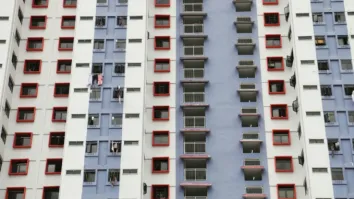
What Tokyo’s 'worrying' demographic trends mean for the residential property market
The population has decreased by over 85,000 people from May 2020.
After multiple corrections seen over the past year, Savills says rents in both the 23W and C5W have seen a reprieve this quarter, bouncing back to levels observed in Q2/2021. The high vaccination rates and plunge in COVID-19 cases in the country may have boosted the confidence that some recovery could be in sight.
“Nonetheless, current demographic trends are worrying for Tokyo. This is particularly true for the 23W, whose population has decreased by over 0.4% YoY and more than 85,000 people from the peak population in May 2020,” says Savills.
The analyst adds that the number of available listings has also increased about 20% from the previous quarter, and some of the rental increments could have been contributed by an increase in the number of listings priced above average as some tenants leave Tokyo.
Here’s more from Savills:
Such changes were unheard of before 2020, showing that the sentiment surrounding the pandemic still lingers. On another hand, major cities such as Osaka, Nagoya, and Fukuoka have not seen population changes as noticeable as those seen in Tokyo. One reason behind this trend would be the differences in the proliferation of remote work – Tokyo has by far seen the highest levels of remote work when compared to other cities.
Furthermore, it is more common in Tokyo to commute from outside the prefecture, and the multiple train lines connecting the city centre to neighbouring prefectures make commutes relatively easy, making living outside of Tokyo a viable option. In regional cities, commuting within the same prefecture is much more common, and train lines may not be as extensive.
The appreciation in rents was more notable in the C5W this quarter, and its premium over the 23W has increased 0.3 ppts to 18.2% (Graph 2). However, this premium on the whole has been decreasing slowly over the past few years, and the pandemic has overall contributed to the tightening of the spread, with the prices of less expensive regions seeing comparatively stronger growth.
Indeed, with the proliferation of remote work, the value of living closer to the city centre appears to have diminished. Despite the continuous population outflow over the past two quarters, occupancy rates have increased, probably with the aid of some rental adjustments, but nonetheless demonstrating the demand for residences of better quality.



















 Advertise
Advertise







